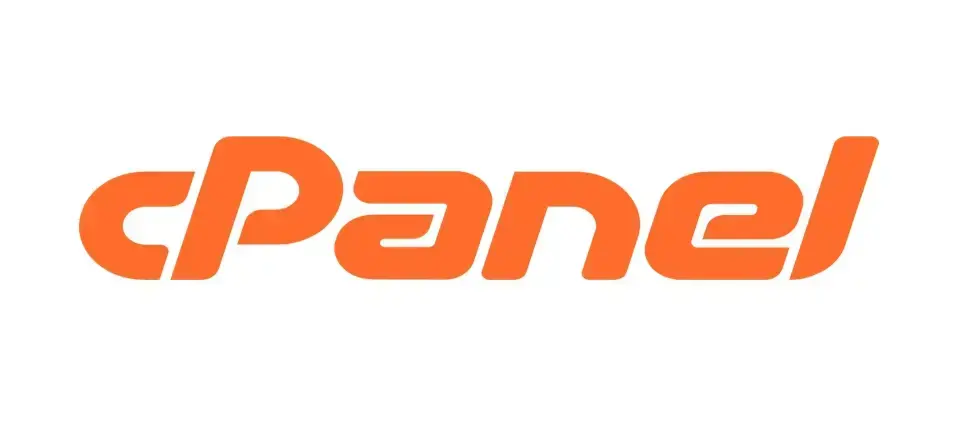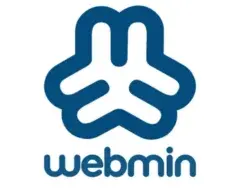Over 95% of web hosting services use control panels to streamline management. cPanel and Webmin are among the leading options, each catering to different needs.
cPanel is known for its user-friendly design and extensive features, making it ideal for managing domains, emails, and databases. Resellers especially favour it for its robust account management and scalability. In contrast, Webmin offers high flexibility and control, which is perfect for those who prefer a customizable interface for managing Unix-based systems.
This comparison explores both strengths to help you choose the best fit for your hosting needs. At Verpex Hosting, we leverage cPanel's capabilities for a superior hosting experience.
Brief Comparative Analysis of cPanel vs Webmin
| Feature/Aspect | cPanel | Webmin |
|---|---|---|
| User Interface (UI) | Intuitive, modern, and user-friendly design | Basic, functional, less polished |
| Dashboard | Centralized with easy navigation | Customizable, but less intuitive |
| Domain Management | Excellent tools for managing domains, subdomains, and DNS; ideal for resellers | Basic domain and DNS management, enhanced with Virtualmin |
| Email Management | Comprehensive email management (accounts, forwarders, spam filters); essential for resellers | Manages mail servers like Postfix, Sendmail; more manual setup |
| Database Management | Integrated tools for MySQL and PostgreSQL, including phpMyAdmin | Supports MySQL and PostgreSQL, with more manual configuration |
| File Management | Robust file manager, FTP account management | Basic file manager, FTP management |
| Backup and Restore | Reliable automated backup system, easy restoration | Functional tools, more manual setup needed |
| Security | Automatic SSL, two-factor authentication, IP blocking, hotlink protection | SSL/TLS management, user/group management, firewall configuration |
| Application Management | One-click installations via Softaculous | Package management, custom modules |
| Support | Extensive community forums, paid support options, comprehensive documentation | Active community support, no official paid support, third-party support available |
| Cost | Commercial product with licensing fees | Free and open-source |
| Ideal For | Small to medium-sized businesses, web hosting providers, beginners | Experienced system administrators, cost-conscious users, those needing flexibility |
| Ease of Use | Suitable for beginners and advanced users | Requires more technical expertise |
| Customization | Limited to cPanel’s offerings | Highly customizable with additional modules |
| Resource Requirements | Requires good server performance | Generally less resource-intensive |
cPanel

Founded in 1997 by John Nick Koston, cPanelwas designed to simplify web hosting management with a user-friendly interface. It quickly evolved into a comprehensive control panel known for its efficiency and robust functionality.
cPanelis widely adopted in the web hosting industry due to its intuitive design, making website management accessible even for those with minimal technical expertise.
Key Features of cPanel
1. Security Features: cPanel offers robust security functionalities such as SSL/TLS management for secure data transmissions, IP blocking, and password-protected directories. It integrates with security plugins and firewalls to safeguard websites from various threats and vulnerabilities.
2. Domain Management: cPanel simplifies domain management by allowing users to add and manage multiple domains and subdomains from a single interface. Users can configure DNS settings, create redirects, and set up domain aliases easily.
3. Email Management: cPanel provides comprehensive email management tools, enabling users to create and manage email accounts, set up forwarding, and configure auto-responses. It offers spam filters and email security options to protect against unwanted messages and potential threats.
4. File Management: cPanel offers a powerful file manager that allows users to upload, edit, and organize files directly through the web interface. Users can create and manage backups, set file permissions, and access FTP accounts for detailed file control.
Resource Usage and Performance Metrics of cPanel
Resource Usage Statistics: cPanel provides detailed reports on server resource usage, including CPU, RAM, and disk space. These metrics help administrators monitor and manage resource consumption, ensuring optimal server performance and preventing overloads.
Bandwidth Monitoring: Users can track bandwidth usage through cPanel, with visual graphs and detailed statistics showing data transfer rates. This monitoring helps manage traffic levels and avoid bandwidth overages or throttling.
Process Manager: The Process Manager tool within cPanel allows users to view and manage active processes running on the server. Administrators can identify and address performance issues or optimize resource allocation by monitoring resource-intensive processes.
Disk Usage Analyser: cPanel includes a disk usage tool that overviews how storage space is utilised across directories and files. This feature helps users efficiently manage disk space by identifying large files or folders that need cleaning.
Server Health Reports: cPanel offers server health reports that aggregate data on various performance indicators, such as load averages and system uptime. These reports help assess the server's overall health and ensure it operates smoothly and reliably.
Pricing Tiers and Licensing for cPanel
1. Solo License: Designed for individual users or small web hosting providers, this license allows managing a single cPanel account and is typically the most affordable option. It includes access to essential personal or small business website features, with support for basic server configurations.
2. Admin License: This tier is for users managing up to 5 accounts and is ideal for small—to medium-sized web hosting providers. It offers a broader range of features than the Solo License and includes enhanced support options.
3. Pro License: This license is for medium-sized hosting businesses. It supports up to 30 accounts and provides access to advanced features and tools. It also includes additional administrative and customisation options to better manage growing client needs.
4. Premier License: Designed for large hosting providers and reseller hosting businesses, the Premier License offers support for unlimited accounts, making it suitable for extensive hosting operations. It includes all available features, priority support, and advanced management tools to handle high-demand environments efficiently.
5. Cloud License: This flexible option is tailored for cloud-based hosting solutions and allows for scalable licensing based on usage. It provides the same features as other licenses but is designed to integrate seamlessly with cloud infrastructure and accommodate variable hosting needs.
Pros and Cons of Implementing cPanel
Pros
Cons
Pros
- Comprehensive Feature Set: cPanel offers a wide range of tools and features for domain management, email configuration, file management, and database administration, all integrated into one platform.
- User-Friendly Interface: Its intuitive design makes it accessible even for users with minimal technical expertise, simplifying web hosting management.
- Automatic Updates: cPanel provides automatic updates to keep the software current with the latest security patches and features, reducing the need for manual intervention.
- Robust Security Measures: The platform includes various built-in security features such as SSL/TLS management, IP blocking, and password protection, enhancing the overall security of websites and servers.
- Extensive Documentation and Support: cPanel offers comprehensive documentation, tutorials, FAQs, and a dedicated support team, helping users resolve issues quickly and understand the platform’s capabilities.
- Scalability and Flexibility: cPanel is highly scalable, accommodating various hosting environments from single websites to large server farms, and integrates with multiple web hosting setups and third-party applications. This scalability is crucial for resellers and those running reseller hosting businesses.
Cons
- Resource Intensive: cPanel can be resource-heavy, potentially impacting server performance, especially in low-resource or shared hosting environments, as it consumes significant CPU and memory.
- Learning Curve for Advanced Features: While user-friendly for basic tasks, cPanel's more advanced features and configurations may require a learning curve, posing challenges for users without additional training or support.
- Limited Customization: Customizing the cPanel interface and its default settings can be restricted compared to more flexible or open-source alternatives, which may limit highly tailored configurations.
- Dependency on cPanel for Management: Users depend on cPanel's specific interface and tools for managing their hosting environment, making transitioning to other control panels or hosting platforms complex and time-consuming. This dependency can be particularly challenging for resellers who manage multiple client accounts.
- Security Vulnerabilities: Despite its security features, the widespread use of cPanel can make it a target for cyber-attacks. Ensuring its security requires regular updates and proactive measures to address potential vulnerabilities.
Webmin

Webmin is an open-source, web-based system administration tool created by Jamie Cameron in 1997 to simplify Unix-based system management through a graphical interface.
Originally designed to ease server administration, Webmin has evolved to support various configurations, from simple setups to complex enterprise environments. It has gained substantial popularity among system administrators for its versatility.
Key Features of Webmin
1. User Management: Webmin allows administrators to create, modify, and delete user accounts and groups, manage permissions, and configure user-specific settings, simplifying user and security management.
2. System Monitoring: It provides real-time system performance monitoring, including CPU usage, memory consumption, and disk space, helping administrators track and address potential issues efficiently.
3. Service Management: Webmin facilitates the management of system services, such as starting, stopping, and restarting services and configuring service settings, making server maintenance more accessible.
4. Package Management: The interface integrates with package managers like RPM and APT, enabling administrators to install, update, and remove software packages directly from the Webmin dashboard, streamlining software management.
5. Configuration Files Management: Webmin allows users to edit and manage configuration files for various system services and applications through a built-in editor, simplifying the process of making and applying configuration changes.
Resource Usage and Performance Metrics of Webmin
CPU Usage: Monitors Webmin's utilisation percentage of CPU capacity. High CPU usage might indicate that Webmin is consuming significant processing power, which could affect server performance.
Memory Usage: Tracks the amount of RAM Webmin processes use. Excessive memory usage can lead to slower system performance or out-of-memory errors, impacting other applications.
Disk I/O: Measures Webmin's data rate read from and written to the disk. High disk I/O can cause performance bottlenecks, mainly if the server has limited resources.
Network Bandwidth: Assesses the amount of data transmitted over the network by Webmin. Increased bandwidth usage can affect network performance and indicate potential data transfer or security issues.
Process Count: Counts the number of active processes initiated by Webmin. A large number of processes can strain system resources and may require optimization or troubleshooting.
Pricing Tiers and Licensing for Webmin
1. Free and Open Source: Webmin is free to use and operates under an open-source license. Users can download, use, and modify the software without any cost, promoting a collaborative development environment.
2. Support and Donations: While Webmin itself is free, users can opt to contribute to its development through donations. Additionally, there are options to purchase professional support from third-party providers who offer services such as installation, configuration, and troubleshooting.
3. Virtualmin and Cloudmin: Webmin can be extended with paid modules like Virtualmin and Cloudmin, which provide additional features for web hosting and cloud management. These modules have their own pricing tiers:
Virtualmin: Offers both a free version (Virtualmin GPL) and a paid version (Virtualmin Professional). The professional version includes advanced features and premium support.
Cloudmin: A commercial add-on for managing virtualized systems, available in both free (Cloudmin GPL) and paid versions. The paid version supports multiple virtualization types and offers enhanced management tools.
Pros and Cons of Implementing Webmin
Pros
Cons
Pros
- Free and Open Source: Webmin is an open-source tool. It is freely available and supported by a community of users and developers, which can reduce costs and offer extensive customisation options.
- Centralised Management: Webmin allows for the centralised management of various server services and configurations, streamlining administrative tasks and reducing the need to edit configuration files manually.
- Extensive Module Support: It offers a wide range of modules to manage different aspects of server administration, such as Apache, MySQL, and email services, providing flexibility and comprehensive control.
- Remote Access: Webmin enables remote server management through a web browser, allowing administrators to perform tasks from anywhere without needing physical access to the server.
- User and Group Management: It simplifies user and group management with built-in tools for creating, modifying, and deleting users and managing their permissions, enhancing security and access control.
Cons
- Security Risks: Webmin is a web-based interface vulnerable to security threats if not properly configured. Exposing it to the internet without adequate protection can lead to unauthorised access and potential security breaches.
- Performance Overhead: Webmin can introduce additional performance overhead on the server due to its web-based nature and the resources required to operate, which might impact server efficiency, especially on lower-end hardware.
- Limited to Unix-like Systems: Webmin is primarily designed for Unix-like operating systems, which limits its use to environments such as Linux and BSD, excluding Windows and other non-Unix platforms.
- Complex Configuration: Initial setup and configuration can be complex for users unfamiliar with system administration, requiring careful management of settings and modules to ensure proper functionality and security.
- Potential for Conflicts: Webmin's extensive control over system settings can lead to conflicts with other system management tools or manual configurations, necessitating careful integration and monitoring to avoid conflicts or misconfigurations.
Conclusion
When choosing between cPanel and Webmin, consider your specific needs. cPanel offers an intuitive interface, robust support, and strong security, making it ideal for users of all skill levels and especially beneficial for resellers due to its scalability .Webmin provides extensive customization and control, perfect for advanced users comfortable with Unix-based systems.
For ease of use and support, cPanel is a standout choice. For customization and open-source benefits, Webmin is compelling. Evaluate your needs to choose the best control panel.
At Verpex Hosting, we offer the power and ease of cPanel. Enjoy its robust features, superior support, and reliable infrastructure. Choose Verpex Hosting for a seamless, secure, and user-friendly web hosting experience with cPanel. Join us today and see the difference.
Frequently Asked Questions
How do cPanel and Webmin handle user management and user accounts?
cPanel simplifies user management with an intuitive interface, allowing hosting providers to easily set up user accounts and manage access to multiple websites. Webmin offers more granular control over user accounts and permissions, making it suitable for managing servers with complex user access requirements.
Can both cPanel and Webmin be used on different operating systems, including Linux servers and Windows servers?
cPanel is designed exclusively for Linux servers and does not support Windows hosting environments. In contrast, Webmin supports both Unix/Linux and Windows servers, providing flexibility for hosting providers managing servers across different operating systems.
How suitable are cPanel and Webmin for managing multiple servers and hosting plans on a dedicated server or VPS hosting environment?
cPanel is highly effective for shared hosting and single-server environments, offering an easy way to manage hosting plans and hosting accounts. Webmin excels in managing multiple servers and is well-suited for dedicated servers and VPS hosting, providing extensive control panel software features for advanced server administration and management.

Yetunde Salami is a seasoned technical writer with expertise in the hosting industry. With 8 years of experience in the field, she has a deep understanding of complex technical concepts and the ability to communicate them clearly and concisely to a wide range of audiences. At Verpex Hosting, she is responsible for writing blog posts, knowledgebase articles, and other resources that help customers understand and use the company's products and services. When she is not writing, Yetunde is an avid reader of romance novels and enjoys fine dining.
View all posts by Yetunde SalamiOn This Page
Brief Comparative Analysis of cPanel vs Webmin cPanel Key Features of cPanel Resource Usage and Performance Metrics of cPanel Pricing Tiers and Licensing for cPanel Pros and Cons of Implementing cPanel Webmin Key Features of Webmin Resource Usage and Performance Metrics of Webmin Pricing Tiers and Licensing for Webmin Pros and Cons of Implementing Webmin Conclusion
with the discount code
AWESOME
Popular Articles
You may also like
Welcome all {{ brandName }} customers
We are delighted to welcome {{ brandName }} customers to the Verpex family. Existing {{ brandName }} users can log in to the new Verpex client area to manage their services with their previous credentials.




















